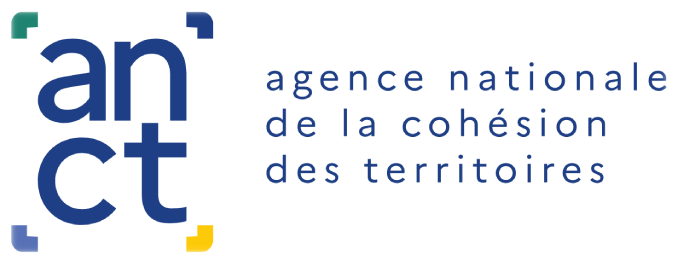The Academy of Sciences had published the report "The Child and Screens" in January 2013. That report, which was written at a time when many of the media used today, especially the smartphone, were not yet as common, attempted to take stock of the situation based on the scientific data available at the time.
The Academy of Medicine, the Academy of Sciences, and the Academy of Technologies issued a statement on April 9, 2019 call for reasoned vigilance on digital technologies.
"The exposure of children and adolescents to various types of screens has multiple effects, very different according to the age group. For the very young, the problem is above all that of overexposure. In older children, and especially in adolescents, the problem is as much one of content as of quantity.- The problem of addiction, in its different forms, is worrying, although its pathophysiological bases and its relations with addiction are not completely known.
- The consequences on behavior and intellectual and social activity depend greatly on the case but appear all the more serious when the child is in a vulnerable situation.
- These negative aspects, which vary greatly from one child to the next depending on the way in which they are exposed to screens, should call for great vigilance, especially on the part of parents and educators.
- The objective is not only to limit access to screens, except, to a large extent, for the youngest children, but to accompany their use, knowing that appropriate use also has very positive effects on intellectual performance and socialization.
- Rather than opposing the inevitable, it is better to support it by ensuring that the conditions of use are optimal in terms of public health.
The call formulates a series of recommendations addressed to parents, teachers and public authorities, research institutions, as well as digital product publishers, encouraging everyone, according to their roles and competences, to reflect on the place and uses of screens and more broadly of digital technology (video games, social networks, etc.).
General recommendations to parents
- Before the age of 3: Do not make screens in any form available to children left alone, especially those whose use children can control themselves (tablets, mobiles). An exception can be made in favor of accompanied, recreational use, which can be encouraged with moderation and caution: in all cases, parental participation in interactivity is absolutely essential. The rules of use can be spelled out in words and established in common.
- From 3 to 10 years old: It is important to set a ritualized time dedicated to screens in order to teach the child to wait (which is the first moment of learning self-regulation), to prefer shared and accompanied screens to solitary ones, to talk with the child about what he/she sees and does with the screens, and to avoid buying personal digital objects (such as a tablet) to the youngest of children, whose use is then very difficult to regulate. The purchase of family digital tools should be the rule. Particular attention must be paid to the use of screens in the evening before bedtime, both because of the time consumed to the detriment of other activities and because of the difficulty of falling asleep thus created.
- After age 10: It is important for parents to maintain a positive dialogue on the use of screens and to remain attentive to symptoms of fatigue linked to sleep disorders, signs of isolation that can lead to withdrawal and a decline in school results. In this regard, let's insist on the false good idea of recovering sleep on weekends which, in reality, only reinforces the child's desynchronization.
- For all ages: Parents need to be engaged in a reasoned use of their own digital tools, especially when interacting with a young child, and, as the child grows, that dialogue is maintained on these issues.
Recommendations to the teaching profession and the government
Society and public authorities must remain attentive to the problems posed by the evolution towards "100% digital" and measure the consequences for the most vulnerable.- From the time a child starts school (now at the age of three for all children) until the end of secondary school, the place of screens must be the subject of a collective reflection within the school, involving parents, especially in contexts of great social vulnerability. The desirable uses for educational purposes must be made explicit, both in class and at home.
- We call on the public authorities, responsible for education and health, to set up permanent and continuous training for all those working with young people, in order to help reduce the consequences of social disparities, particularly in the use of social networks.
- The vigilance of all (families, teachers, educators and public authorities), is necessary with regard to violence, misinformation, harassment and proselytizing on social networks.
- We also call for the greatest vigilance on "e-sport" competitions, which should be prohibited to children under the age recommended for the games used in the competitions. Binding measures should be put in place in this sense.
- Eye safety standards should take into account the photosensitivity of certain "fragile" eyes (e.g. albinos, but also eyes with degenerative retinal diseases and very young subjects with very clear lenses), on which very little data is available.
Recommendations to research institutions
The difficulties linked to the interface between digital contents and their various users are still poorly assessed. They require the work of researchers, both anthropologists and psycho-sociologists. This work should be carried out with the actors close to these situations (doctors, social workers, teachers) and as close as possible to the families.- Ongoing longitudinal studies that will provide a better understanding of the multifactorial effects of screens on children should be encouraged.
- The pedagogical uses of the Internet and screens are multiple and are constantly diversifying (search for information, digital simulations...). Research on their contribution to learning and the vigilance to be exercised must be developed, while ensuring that the results are shared with educators, and particularly teachers.
- We call on researchers to engage in an informed dialogue with teachers, educators, health professionals, parents, and teens themselves to understand the wide range of online experiences of young people from different backgrounds and with different psychological functioning.
- Further research is needed to remove doubts about the adequacy of the safety margins of current standards for protecting the eye from the harmful effects of light. Most of the suspected toxicity concerns the blue component of the spectrum, for which filtering would be a technically simple solution. Further scientific work is needed on the effectiveness of different types of blue light filters (software, glasses, etc.).
- We call on neurophysiologists, psychologists and philosophers to work together to understand the human-machine relationship, in order to lay the ethical foundations for interactions that can enrich the register of human expressions and interactions, and to oppose those that would contribute to reducing it.
Recommendations to digital product publishers
While waiting for a more solid factual basis to be established, we invite manufacturers of digital objects to remind parents of the importance of moderation, both in their practices and in those of their children.- Every effort should be made to publicize the existence of the strategies, present in the "12+" games, so that players can act in an informed manner or get help to understand the issues.
- We call on video game publishers, and soon on interactive film makers, to imagine new ways of informing consumers and parents. Their recommendations have so far focused on the characteristics of the content; they must now also inform about the variety of the player experience.
- Finally, we call on manufacturers, public authorities and private organizations concerned with education and digital citizenship to use technological resources (streaming and plug-in, for example) to invent new spaces for mutual information involving experts, parents and professionals. Thus, the individual or collective situations, sources of problems for screen users, will be better perceived and known.
Référence :





